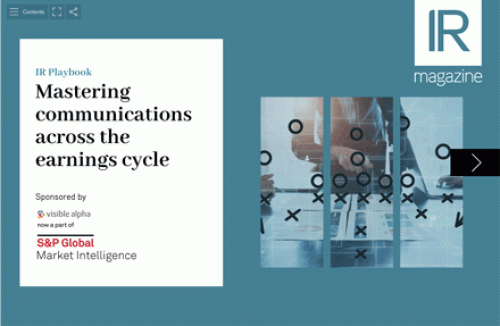For many IR teams, the annual report is one of the biggest projects of the year. Countless hours are poured into planning, writing, editing and proofing it over a timeframe usually lasting several months.
Yet, once all that work is finished, companies are failing to make the most of the time and effort invested, according to a new study. Nexxar, the corporate reporting firm based in Austria, polled listed companies across the DACH region – comprising Germany, Austria and Switzerland – about their reporting habits.
The study, undertaken in partnership with the Vienna University of Economics and Business Administration, finds that just 36.8 percent of respondents continue to communicate the information from their annual report in the months after it is published. The remaining 63.2 percent say communication happens only at the moment the report is released.
‘Many companies seem to think the content of an annual report is outdated by the time of publication, but that’s just not true,’ says Eloy Barrantes, CEO at nexxar. ‘They contain countless facts that can be used for communication throughout the year: on the economic development, sustainability achievements, employee satisfaction, strategic goals and much more. If companies do not actively communicate their content, they will not exploit the full user potential of their report.’
When companies do communicate about the annual report, they use a variety of communication channels to get the message out, finds the study: 100 percent of respondents use the corporate website to promote their report, 87.9 percent issue a press release and 67.2 percent publish social media messages.
Looking specifically at social media, more than half of respondents rely on Twitter (62.1 percent) and LinkedIn (55.2 percent). Just over a quarter make use of Facebook (27.6 percent), while a small proportion use Instagram (8.6 percent) and German-speaking social network XING (6.9 percent).
‘Social media platforms are particularly suited for communicating report content. Via channels such as LinkedIn, Facebook or Twitter, the content from the report can be reused as so-called snackable content or social media assets,’ comments Barrantes.
‘These assets are, for example, animated GIFs for central KPIs, quote and fact cards, as well as infographics – for example, for the business model. We advise companies to prepare between 10 and 20 postings on their report within six to 10 months after publication.’
Asked to pick out examples of best practice, Barrantes highlights German wholesale supplier METRO, a nexxar client. The company ‘created a strategic communication plan for its last report,’ he says. ‘About 20 assets have been published on LinkedIn, Facebook and Twitter. Within the first four months after publication, the visits showed an increase of more than 40 percent.’
Barrantes says another client saw more than 100,000 visitors to its corporate responsibility report thanks to a social media and targeted ad campaign.
The survey was open to companies listed on major stock market indices in Germany, Austria and Switzerland, with 60 individuals taking part. Among other findings, the report shows that issuers have moved sharply away from printing annual reports over the last 10 years: the average print run for a DAX 30 company has fallen from 30,842 in 2009 to 1,856 in 2019.










